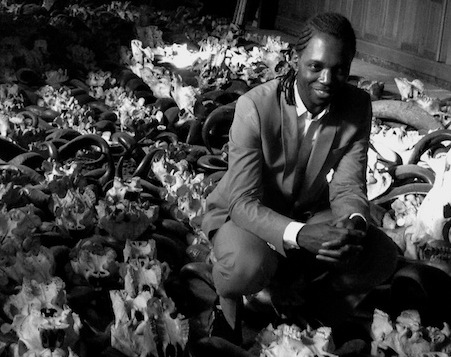The news of Aberfan shocked him into a new awareness. What was the fire that had destroyed his workshop compared to the river of slurry and filfth that snuffed out the lives of 116 children? Not forgetting the 28 adults. Nothing. “People can loose more than I’ve lost,” he thought.
Granted, his livelihood had been reduced to a pile of charred wood and ashes, and so had some of the tools his father and grand-father had used on the Terra Nova, the ship that had taken Captain Scott on his fateful journey from Cardiff docks to Antarctica in 1910. Scott died in the snow and ice. The children were all dead too. But he was alive. Keep going. There was nothing else but to do. Just keep going.
Friends and neighbours donated materials and goodwill; John Weston Thomas picked himself up and carried on. He rebuilt his workshop and started taking in orders again. He had a mission, clear and energising: to revive harp making in Wales. He’d arrived at it by a scrappy circuitous route. After training as a carpenter and joiner, he joined the merchant service at the beginning the war, and had gone back to his chosen trade after V-Day. He was a practical joker. On one building site, a worker left his trowel out while he went off for his lunch break. In less than hour John Thomas had fashioned a tiny replica of it. “What’s this?!” gasped the worker when he came back. “Well, you shouldn’t leave your tools out in the rain should you?” answered John, to general guffaws.
John Thomas acquired a taste for making miniatures. His work was dazzling in its accuracy and detail. A full set of tiny tools won him a silver medal at the Festival of Britain in 1951. Then a complete set of orchestral instruments was commissioned by a collector. Of all the instruments he fashioned, he was most taken by the little Grecian harp. He was a Welshman and the harp stirred him somewhere deep.
After a time spent teaching in London, he came back to his native Cardiff and did all kinds of advanced wood work, building sets for the BBC and models for local museums. But the harp kept tapping on his shoulder. “You know,” he said to his wife Joan, “I wouldn’t mind making harps. “Well, look!” she answered, “either do it or shut up!” Behind every great man…
So, in the mid 1960s, he set about it. There were hardly any harp makers left in Wales, and not that many harps either; at least, none other than those grand curlicued affairs that aped the regency splendours of the Érard pedal concert harp. John Thomas had to go to the Welsh Folk Museum and study the old harps there with his keen eye: triple harps, double harps, ancient one-row harps. He rooted about for knackered old instruments that he could take apart, just to see how they were constructed. He dug deep into the archaeology of the instrument.
There had once been many harp ‘luthiers’ in Wales; men like John Richards of Llanrwst in Snowdonia, who was harpist to Queen Charlotte in the mid 18th century. The little hill-circled village with its old humpbacked bridge was the centre of harp making for at least two hundred years before the industry faded out in the late 19th century. The few Richards triple harps that survive are objects of refinement and beauty. If you felt expansive, you could even say that John Richards something of a Welsh Stradivarius.
One of Richards’ pupils was Basset Jones of Cardiff, who became a protégé of the fearsome Lady Llanover of Llanover Court near Abergavenny. He made at least three dozen brand new harps in the early to mid 19th century and had the privilege of presenting one of them to the Prince of Wales. Later, one of Llanover Court’s two ‘in house’ luthiers, a carpenter by the name of Abram Jeremiah, was possibly the last harp maker to work in Wales. That is, before John Thomas decided to revive the art. Lady Llanover herself, a born-again ‘Wales-o-phile’ of the most ardent type, deserves high praise for keeping the Welsh harp out of the morgue, where it seemed inexorably bound in the late 19th century.
John Thomas, no relation at all to Queen Victoria’s harpist of the same name, was never without a smouldering pipe between his lips. Some glowing ember or an unextinguished match was probably responsible for the fire that ravaged his workshop in the autumn of 1966. Two weeks later disaster struck at Aberfan. For a while, every Welsh men and women lived with the bitter taste of grief and death in their mouths. They mourned as a nation for the coal-black misery of their brow-beaten past; they railed at God and the Coal Board. That terrible memento mori, together with plenty of gruff passion and courage, put John Weston Thomas back to work. The business grew and he took on apprentices.
One of them was Alan Shiers, a young woodworker from a neighbourhood in the Cardiff docks with the enviable name of Splott. Down in the docklands of Alan’s post-war youth, music was a kind of social glue. His whole family sang or played an instrument, without ambition, pretence or stress. It was just something everybody did. “I didn’t realise it then, but there was a sort of social belonging that only music brings,” he remembers. “Everybody would be dancing in the streets at New Year’s Eve. And I just felt – wow! This is it. You’re either playing the music, or making the tools to play it. Culturally, the people who make the instruments are a kind of forgotten band of brothers really.”
After working as an organ-restorer’s apprentice (“Organs were on their way out. They became ‘vestrified’”), then a boat builder (“just cheap labour”), then doing voluntary work in India and youth work in Cardiff, Alan was on the look out for a piece of rosewood one day, to make a bridge for his guitar. One of the teenagers at the youth club where he worked knew John Thomas and offered to take Alan round to his workshop.
“He was a bit of crusty character,” Alan tells me. “At our first meeting, this lad introduced me: ‘He’s looking for a bit of rosewood.’ ‘What?!!’ Mr Thomas replied, ‘I’d save the sawdust of rosewood. It’s very precious timber!’ Anyway, he delved into his store and came up with this piece of wood about so long. And I said, ‘Oh no…I don’t want all that!’ ‘You’re not having it!!!’ he said.” At which point Alan mimics his old master’s look of stern rebuke and cracks up at the memory. “‘I’ll give you six inches and you save the sawdust,’ was what he said and then I must have messed it up. I’m pretty sure of that.”
Alan ended up working as John Weston Thomas’ apprentice for five years. “I realised that I’d landed with somebody I’d been looking for since I was fifteen,” he says, “but I was 23, so mature enough to appreciate it. When you’re at school you just think learning is learning. But then…if you think education is expensive, try ignorance instead…isn’t that right?”
Alan had found a “gem”, the last in line of the old traditional woodworkers. There was a circular saw in the workshop, but that was about it. Everything else was done by hand. “I’ve had to unlearn some of that stuff,” he admits. But above all, despite the low wages, the stress of deadlines and all the rest, it was the camaraderie of the place that made those years so rewarding: John Thomas dressing up as Long John Silver in the oily old rags they used for polishing; or swigging water from a bottle clearly marked ‘METHS’ whilst smoking his pipe and talking to some trembling visitor; or leaving little piles of gunpowder around the shop and casually tossing his lit match on one, just to see it go bang and scare the living blazes out of Alan or anybody else who happened to be about him at the time.
“We could never make enough harps, because we were making them by hand,” Alan says. “And sometimes he refused. I remember some bloke going on and on at him, and I thought ‘Mmm, he’s very quiet. Normally he’s chirping.’ So this bloke says ‘When’s it going to be ready then John?’ You had to call him Mr Thomas. Mr T, was as I close as I ever got to familiarity. ‘Well…it’s never going to be ready for you,’ he says. ‘I don’t like your face!’ Ha ha ha! You know, the Sales department would have shot themselves!” Alan laughs again at the memory but then, still wearing his smile, he quietens down before adding, “it was such a lovely place. You smelt the wood and you smelt the shavings and John would come over with some Welsh cakes. If you were in, boy, you were in.”






